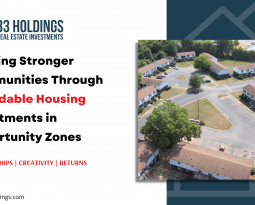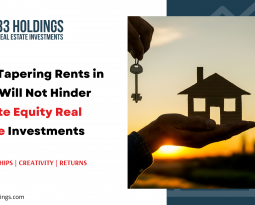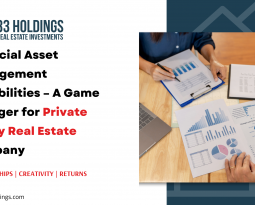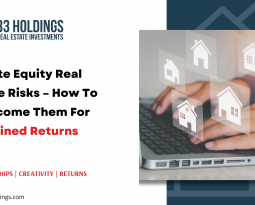Every investment decision should be backed by a thorough due diligence and analysis. At 33 Holdings, we have a team of professionals who specialise in researching the real estate markets and then arrive at a decision.
While there are several permutations and combinations one should bear in mind while evaluating an investment, some of the more common aspects to bear in mind are as below.
- General Market Risk – Market graphs often show fluctuations in interest rates, inflation and other fundamental economic figures. While a variation in these numbers are inevitable, investors can make informed decisions by hedging their stakes across a diversified portfolio of properties.
- Asset-Level Risk – More often than not, residential properties are in demand. Within the broader asset class of such properties, multifamily real estate and offices are considered “low risk low return”.
Commercial properties such as shopping malls, hotels etc. yield a higher return on investment, the risk of the invested principal diminishing is more than in a residential property. This must be borne in mind, when deciding on an investment.
The investments team at 33 Holdings weigh all risks a commercial property could pose before making a decision. This is done with the help of proprietary analytics and a keen sense of the real estate markets.
- Structural Risk – Factors relating to an investment’s financial structure and the rights it provides to an individual participant is called “Structural Risk”. These are commonly encountered in joint ventures where an investor should be especially careful about their rights, their responsibilities and obligations, for instance – a remuneration to be paid to the manager of the venture firm.
In such cases, a safe method of investing would be to consult an industry subject matter expert to ascertain the pros and cons of the investment before going all in.
- Replacement cost risk – Demand for rental properties drives up the lease rental rates of existing properties. Such spikes subside once newer properties are ready and available to be leased out.
Such a scenario also sometimes leads to current properties being “seen” as obsolete, devoid of modern amenities and not up to the mark. Investments made in such a property could be at risk of diminishing.
- Leverage Risk – The more the debt on an investment, the more the risk and the more the demand in return. Leverage is a force multiplier that helps move a project quickly and increase returns
- Credit Risk – Risks taken bearing in mind the leaser, their length of stay and the stability of the property’s lease income stream is termed as credit risk.
- Idiosyncratic Risk – A risk that is unique to a specific real estate property or a particular asset class within an area is referred to as an idiosyncratic risk. One of the most reliable ways of mitigating this risk is by diversifying the investment basket.
33 Holdings has a team of industry professionals who come with a rich experience of the real estate market with an emphasis on the South West marketplace.
We take pride in being able to augment the investment decision making process of our investors and help them grow their investments as safely as possible.





